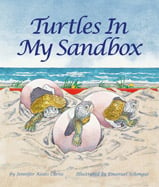Alignment to Standards for NC

| Grade | Number | Standard |
|---|---|---|
| 1 | SC:1.L.1 | characteristics of various environments and behaviors of humans that enable plants and animals to survive. |
| 1 | SC:1.L.1.3 | Summarize ways that humans protect their environment and/or improve conditions for the growth of the plants and animals that live there. (e.g., reuse or recycle products to avoid littering.) |
| 1 | SS:1-5.05 | care and management of the environment within the school and community. |
| 2 | SC:2.L.1 | Understand animal life cycles. |
| 2 | SC:2.L.1.1 | Summarize the life cycle of animals: birth, developing into an adult, reproducing, aging and death, |
| 2 | SC:2.L.1.2 | Compare life cycles of different animals such as, but not limited to, mealworms, ladybugs, crickets, guppies or frogs. |
| 2 | SC:2.L.2.2 | Recognize that there is variation among individuals that are related. |
| 2 | SS:2-5.06 | Identify and describe the people, vegetation, and animal life specific to certain regions and describe their interdependence. |
| 4 | SC:4.L.1 | effects of environmental changes, adaptations and behaviors that enable animals (including humans) to survive in changing habitats. |
| 4 | SC:4.L.1.2 | how animals meet their needs by using behaviors in response to information received from the environment. |
| 5 | SC:5.L.1 | structures and systems of organisms perform functions necessary for life. |
| 5 | SC:5.L.2.2 | Classify the organisms within an ecosystem according to the function they serve: producers, consumers, or decomposers (biotic factors). |
| 5 | SC:5.L.3.2 | Give examples of likenesses that are inherited and some that are not. |
| K | SC:K.L.1 | Compare characteristics of animals that make them alike and different from other animals and nonliving things. |
| K | SC:K.L.1.1 | Compare different types of the same animal (i.e. different types of dogs, different types of cats, etc.) to determine individual differences within a particular type of animal. |
| K | SC:K.P.2.1 | Classify objects by observable physical properties (including size, color, shape, texture, weight and flexibility). |